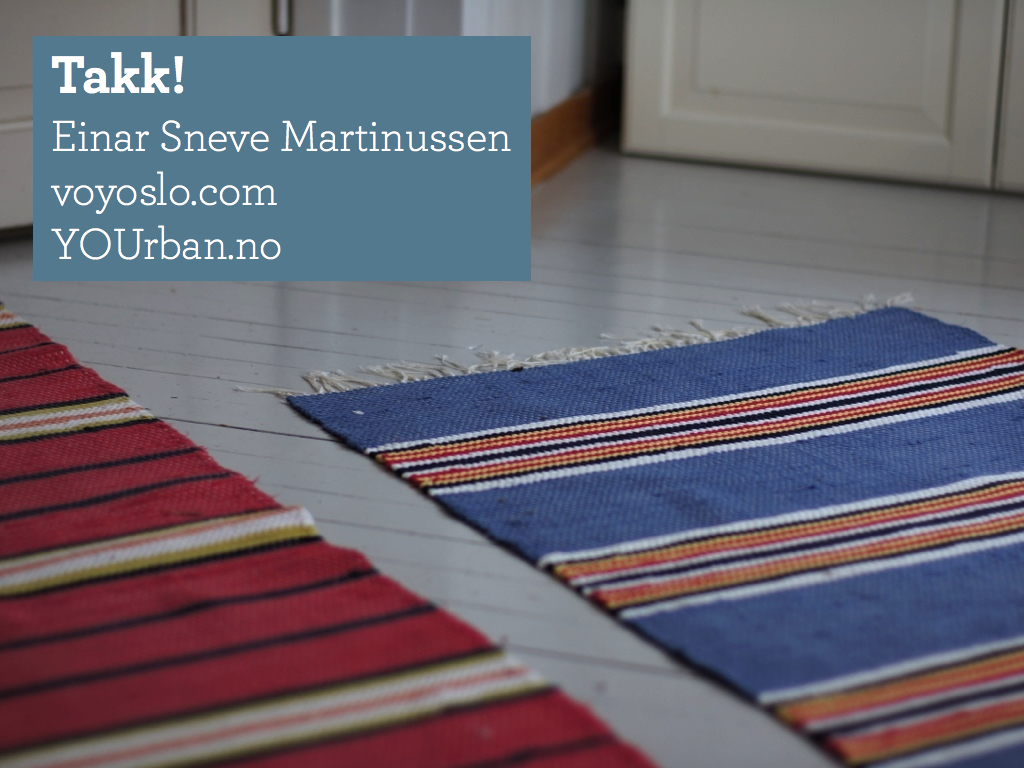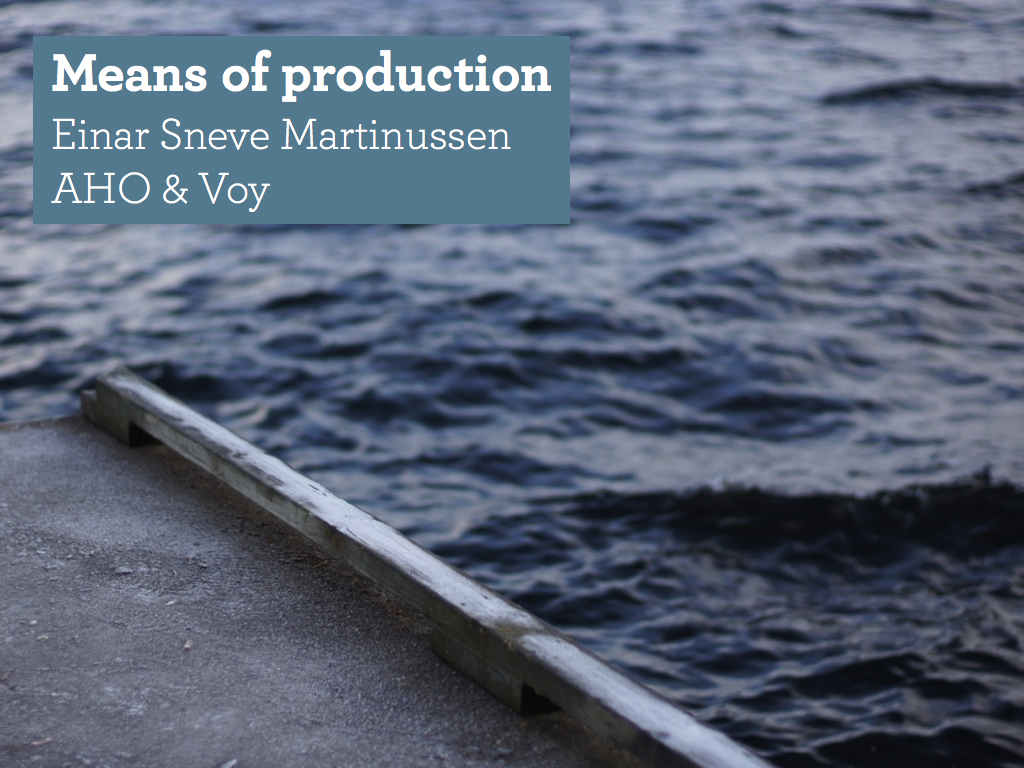Means of production
Einar Sneve Martinussen | 26. October 2012
Last week I talked at Playful at Conway Hall in London. Playful is a conference about design, games and technology organized by Greg Povey and Mudlark. This year it covered a wide range of topics; from market research, to digital craft, to clapping. It was an interesting and well-curated event that offered both insights, critique and entertaining examples from different disciplines. Mudlark had put together a purposefully varied group of speakers from design, art, research etc. Common threads was playful approaches to creating interactions with technology, and reflections around practice, concepts and methods, and a shared emphasis on understanding technology from the perspective of human activity and experience.My talk was called 'Means of production' and examined relationships between technology, design and everyday life. I showed some of the work we have done with YOUrban and our explorations of hybrid products as approaches to re-imagining technology through design. Here are the slides and notes from my talk:
Hei, I’m Einar Sneve Martinussen.I’m a designer and researcher at the Oslo School of Architecture and Design, where I’m currently teaching interaction design and doing a PhD with the research-project YOUrban. I’m also a part of a design studio called Voy that makes interactive products and media.
In our design and research we look at how technology takes place in the world around us and how it becomes a part of daily life. We are interested in how the material and cultural qualities of technologies are produced. Today I want to talk about these processes of production.

I would like to start in the Arctic. I’m come from a place in the north of Northern Norway - far above the Arctic Circle. In popular culture the Arctic is often portrayed as an exotic land of snow and ice. Nature shows and tourist adverts have created an image of a world made up of reindeers, dog-sledges and Northern lights. But generally people don’t live in the Arctic because of the Northern lights.
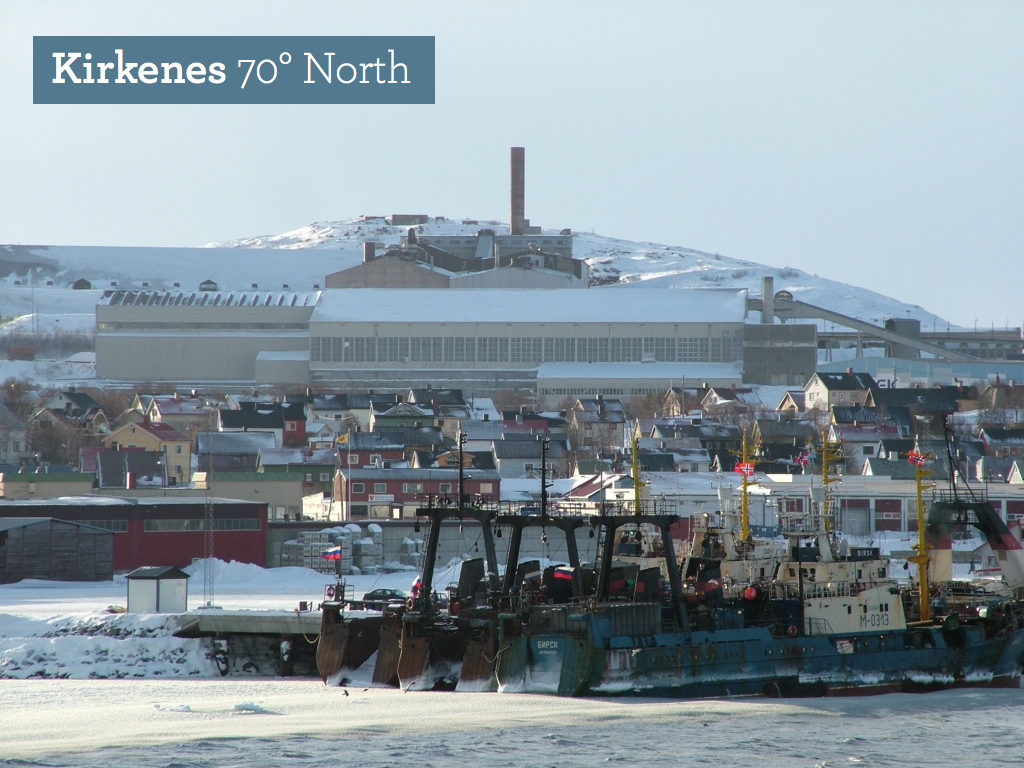
People live in the Arctic because of resources. Fish, oil and mining; as in my hometown Kirkenes. Kirkenes is a small mining-town at the boarder between Norway and Russia. It is built next to a fjord and an open-pit ore-mine.
Mining is a relatively straight forward process and has changed little in the last 40 years. Rock is blasted, then ground into powder, iron is separate out in a factory, and finally shipped of to China.
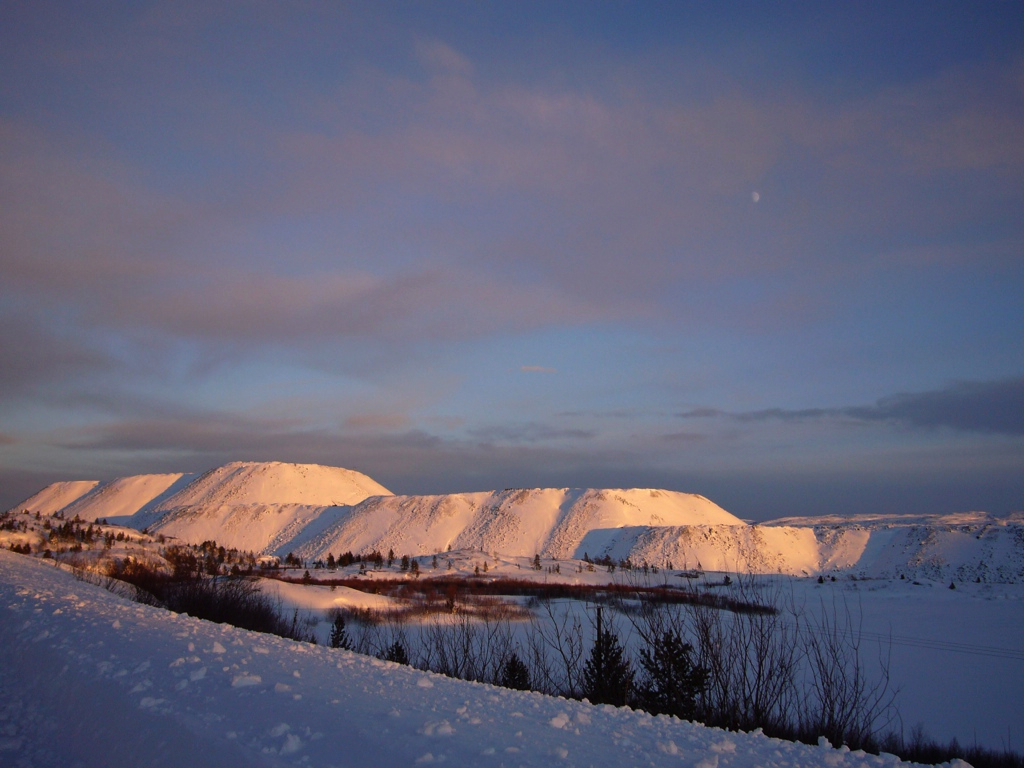
Mining is a loud, brutal and resource-hungry process. It even changes the landscape; creating giant holes in the ground and artificial mountains of debris. In this process the means of production are visible, and so are the power-relations, economics and environmental impacts.
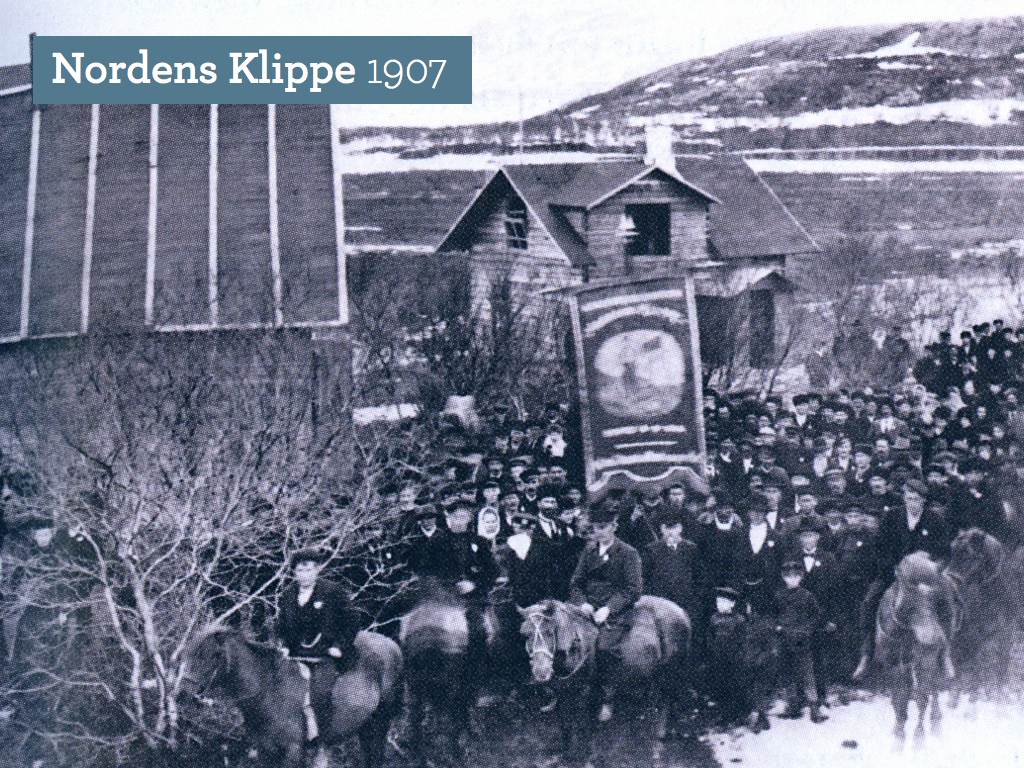
Mining-towns therefore have a history for politics and activism. It is no coincidence that the mining-towns of the north fostered some of the most radical socialist movements of the previous century. Responsible of pointing out and challenging the understandings of both industry and labour. Mining is a process that opens up for well-established critical discourse. It’s problematics are in the open.
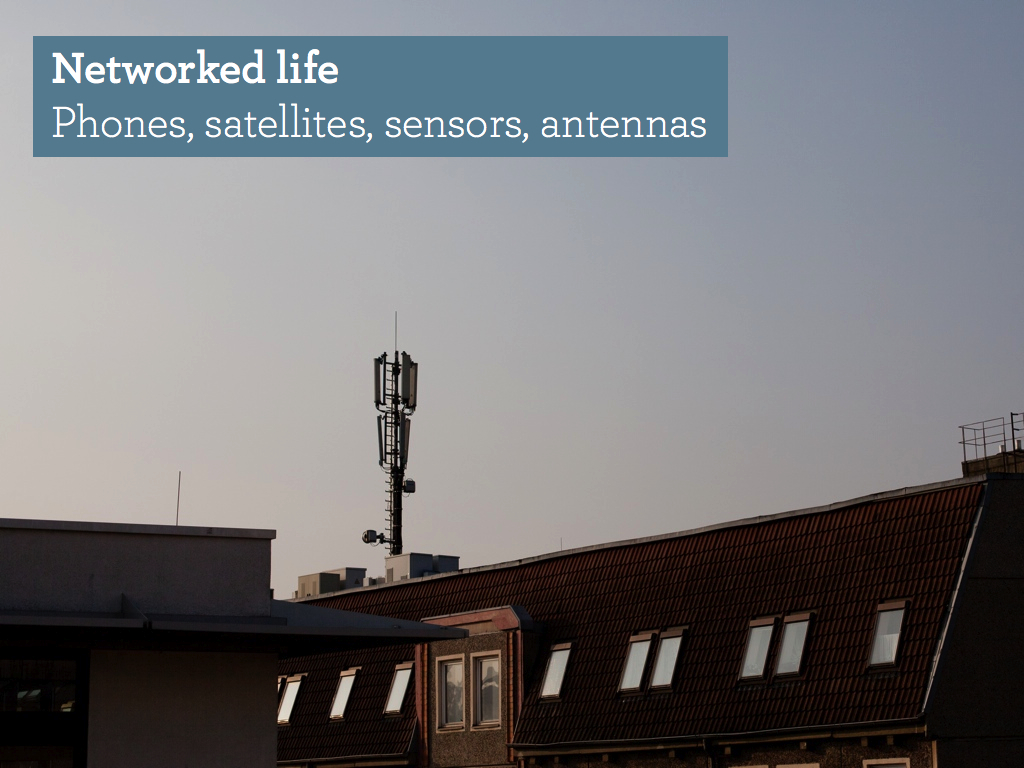
However, the interested in a phenomena isn’t visible and that doesn’t have well-established political traditions: networked life. As everyday life gets increasingly interwoven with networked technologies life it is going through subtle, but important changes. The architect William Mitchell described this process as the emergence of an ‘electromagnetic terrain’: an intricate, invisible landscape - that is only hinted at by the presence of antennas.
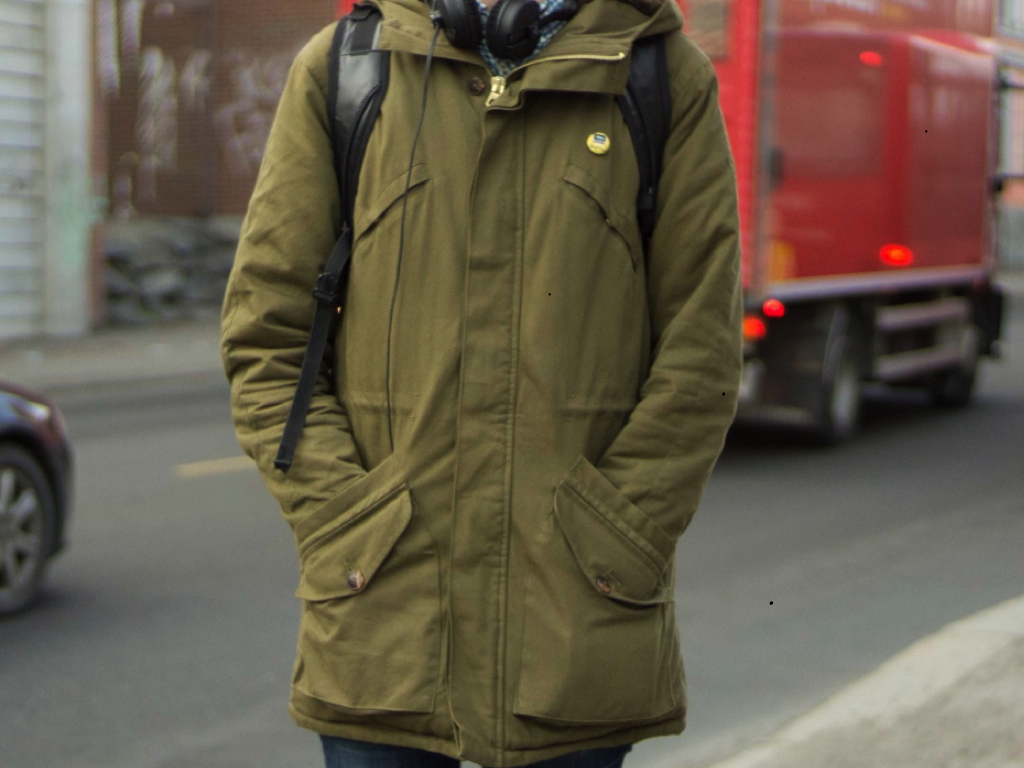
But I would argue that today networked life looks like this. It takes place in our streets and in our pockets. For example: In the pockets of this fine, but boring jacket there are incredible technological innovations: an iPhone, a Kindle, two RFID cards with radio-chips that give access to both transportation and shelter. All of these would have been unavailable, if not unimaginable a few years ago, but today this is a quite ordinary part of commuting. We are surrounded by products that represent spectacular promises of the future at the same time as they are becoming mundanities. I’m interested in how this process of normalisation takes place, and how it can be unpacked. And I want examine a few issues that I think are important.
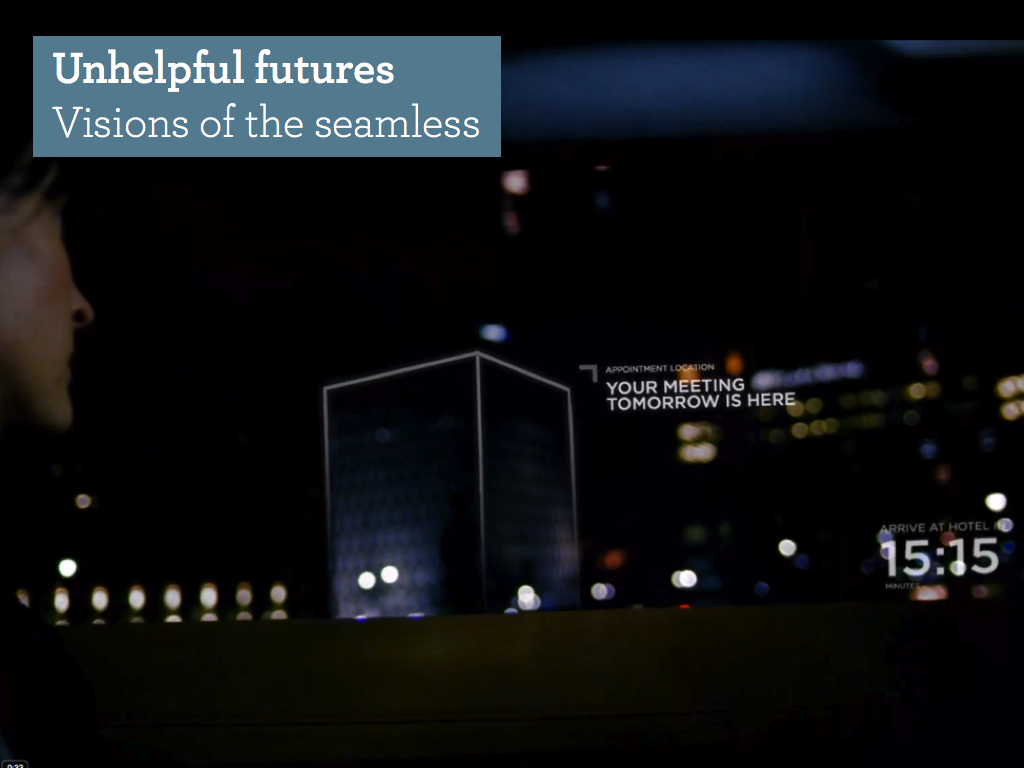
First: The future might be unhelpful. Or at least the grand epic future of corporate envisioning. There is a trend among technology companies to produce films about how we are going to live with technologies in the future. These films are interesting not because they try to show us the future, but because they are cultural propositions. They are symptoms of the believes and values that dominate commercial technology development.
This is Microsoft Office’s ‘Productivity Future Vision’ (25.okt 2011). It is a good example because a lot of resources has gone into this, but it is still unhelpful. Here we are shown a woman who is traveling and interacting with a number of spectacular technologies on her journey. But what it in fact is is: a woman arrives at an airport, gets into a taxi and pokes at her phone. All this 'future' is accompanied by horrible, pretentious sub-Coldplay piano-music.

Or this: An uninspired commuter at a tube-platform who looks around awkwardly and points his phone at stuff.
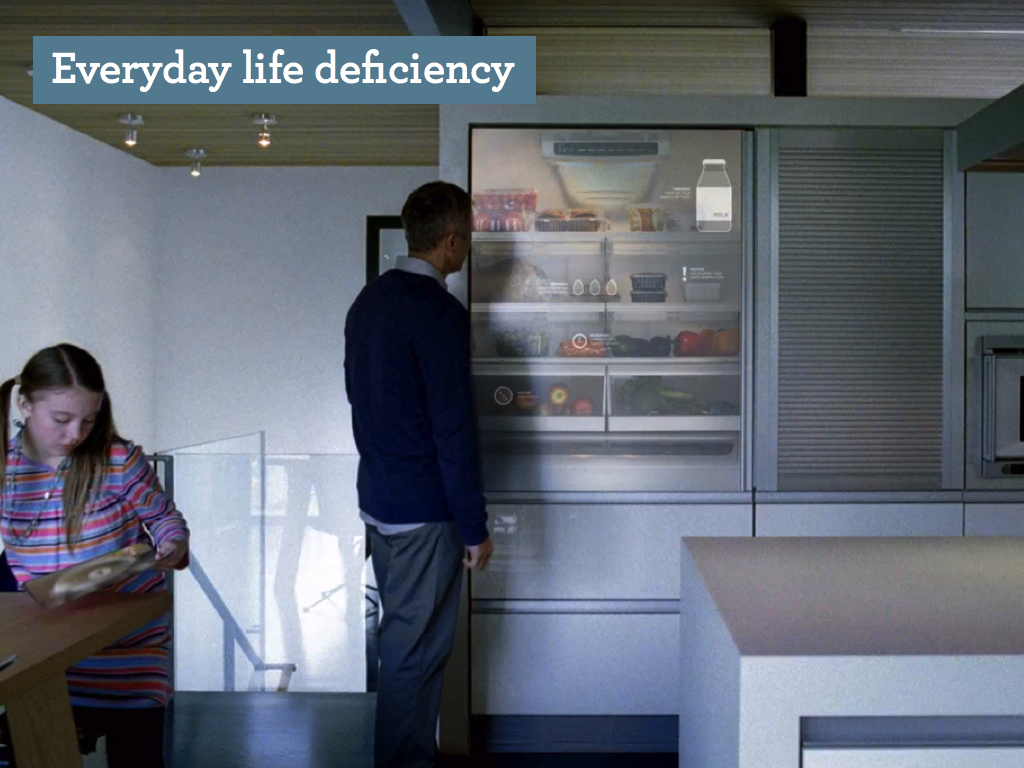
Finally. The dad that looks at the screen on his fridge to see what is inside the fridge. And we could go on and on. Microsoft’s vision presents a false mundanity. It doesn’t articulate at the level of daily life. There is an everyday life deficiency at work here. We could laugh at Microsoft all day, and this is a valuable response, but there are far more important things going on here.

Because there are a set of ideologies and philosophies engrained in films like this. It is perhaps most obvious if we look at the language Microsoft uses to describe their vision:
‘Watch how future technology will help people make better use of their time, focus their attention, and strengthen relationships while getting things done at work, home, and on the go.’
It is about optimizing daily life through technology. It sounds like an airport self-help book for tired businessmen. This is a vision of networked life that takes place within the dominant imagination of late-capitalism and celebrates seamlessness and efficiency.
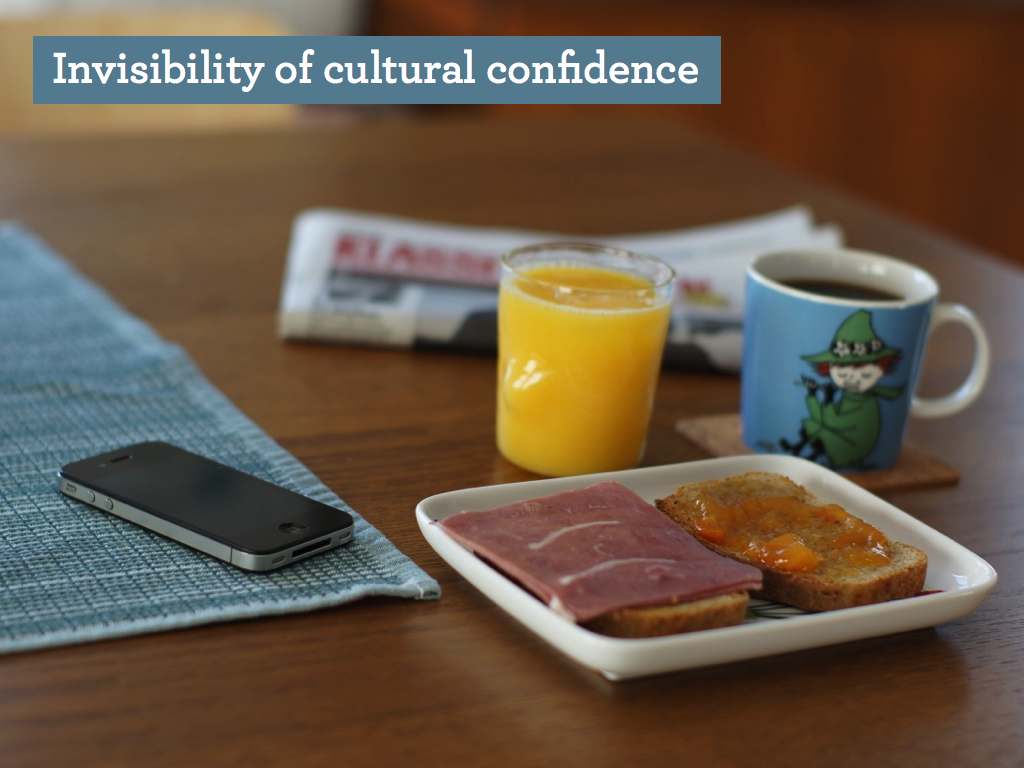
Now I want to move on to a cultural artifact with a cunning cultural sensibility: the iPhone. The history of the Apple iPhone is an excellent example of how the cultural expectations of technology constantly change.
Five years ago: June 2007: the first iPhone was released and was accompanied by this set of adverts. At this time no-one new what this was so the focus is on explaining that this is a screen you can touch. It is all about interface and gestures agains a black background. There is no context.
Two years ago: June 2012: the iPhone 4 was released and accompanied by this advert. Here there is no explanation, only context. It is not about technology and interface, but about everyday culture. It is about domesticating video-calls. We can see how the cultural perception of the iPhone has changed completely: It has become a taken for granted part of daily life. The iPhone have managed to become it’s own frame of reference in under three years. Interestingly, this is shaping the popular expectations to consumer electronics, as well as shaping the imagination of designers and industry.
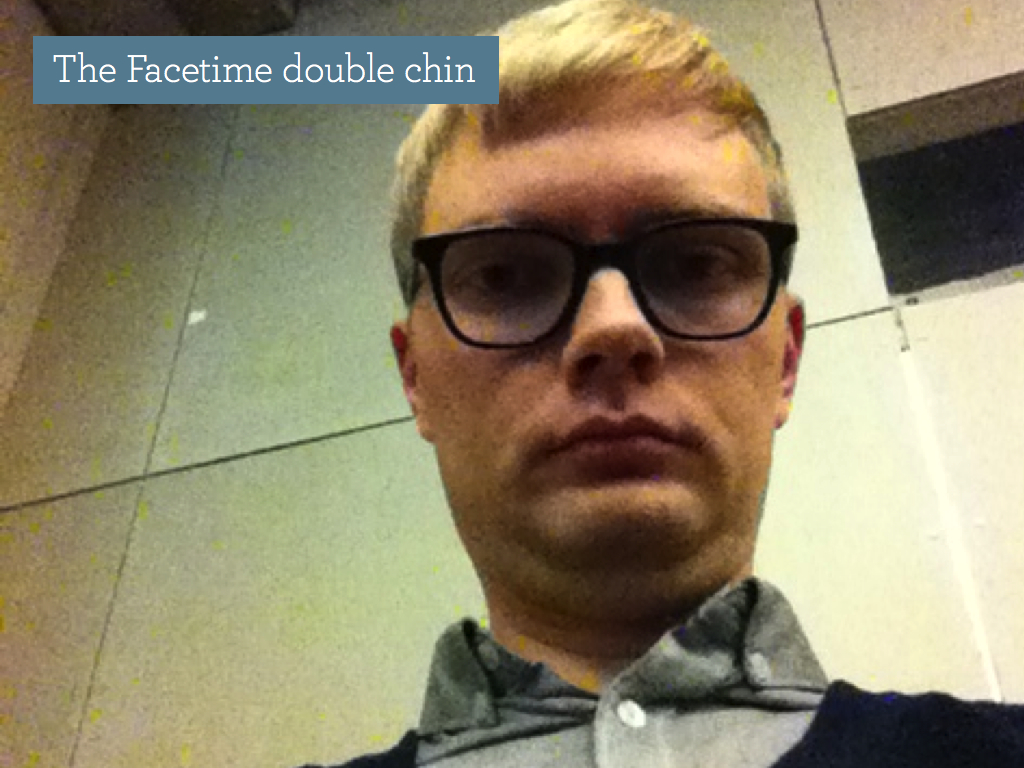
But of course: Apple’s representations of the iPhone doesn’t reflect the realities of how it is experienced. (For example they fail to mention the FaceTime double chin). Which points to that there still is an everyday life deficiency here.
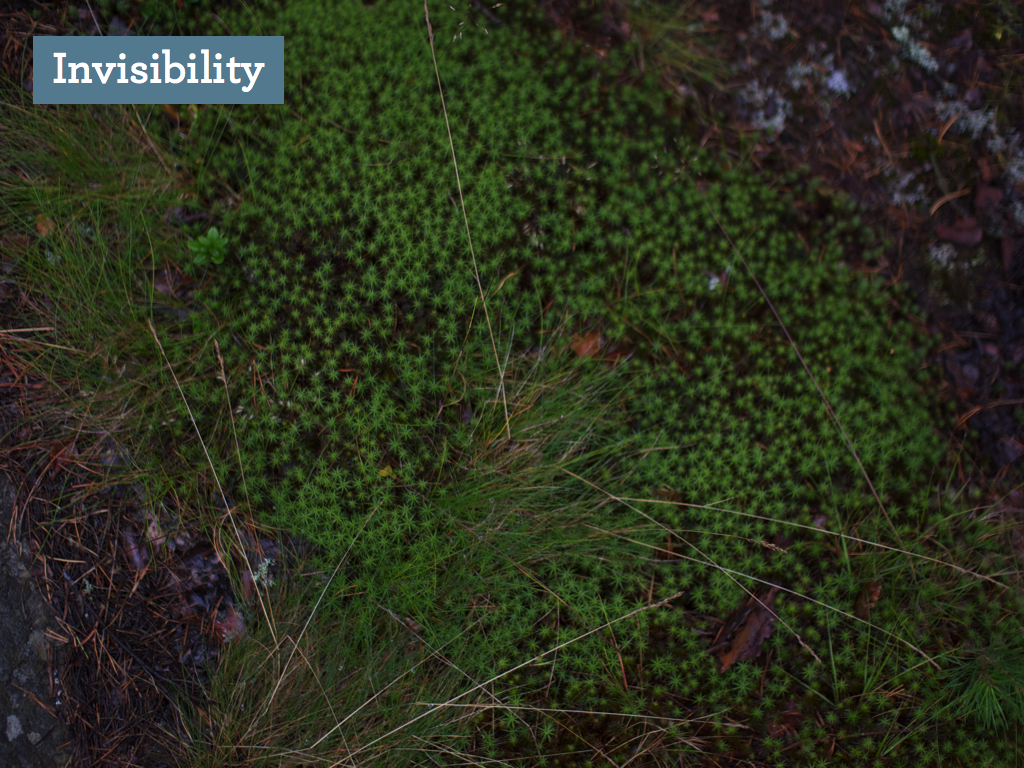
I argue that both the Apple and Microsoft films obscures aspects of the technologies and makes it less understandable. They limit what we can know about living with technologies and produce invisibility at multiple levels: 1. Technological invisibility; as in Microsoft’s celebration of seamlessness. 2. Cultural invisibility; as in the iPhone's slick culture confidence. However, both of these have in common that they are produced through popular media; through online films and advertisement. Popular media plays an important part in how technology is understood and how it is expected to be. Which, I would argue, also could mean that these understandings can be challenged through stirring popular imagination. And using media and communication as a tool.
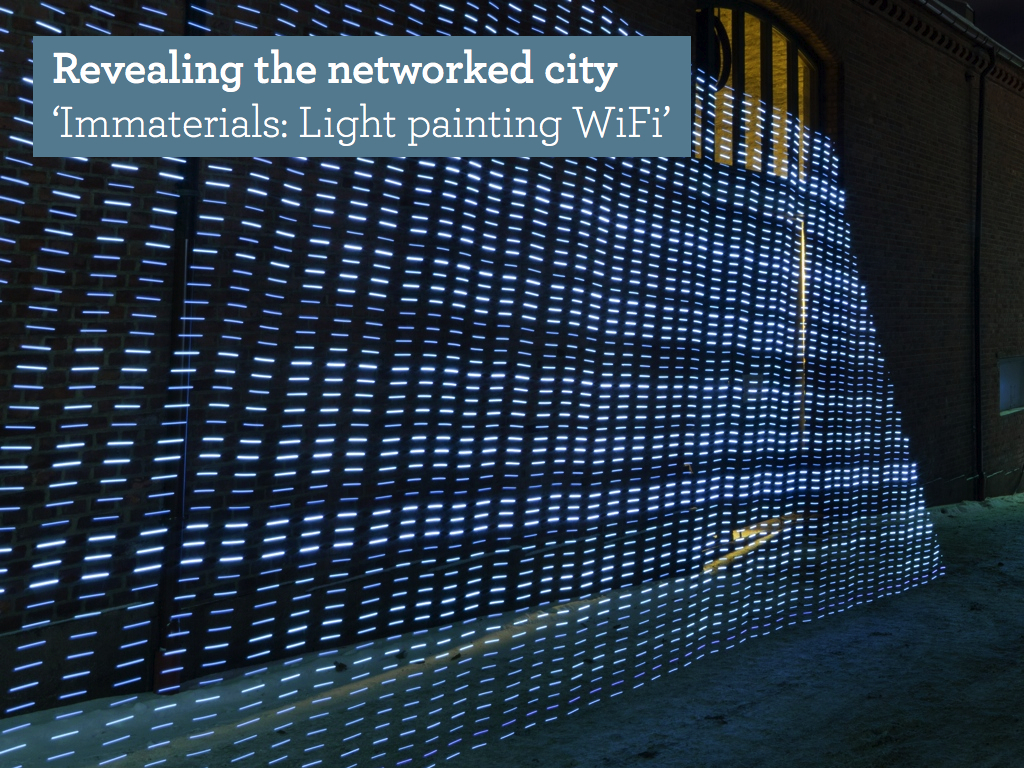
In our work in Oslo we are exploring ways of using design to respond to the invisibilities of networked life. In a research project called YOUrban we have worked specifically with the networked city. Here Timo Arnall, Jørn Knutsen and myself have produced a film called ‘Immaterials: Light painting WiFi’ which is about visualising the invisible landscape of networks in cities:
This film points out that the streets are full of digital structures that we can’t see. At one level it is about explorations of technological material where it takes place. It is about contextualising technology by making it visual and spatial.
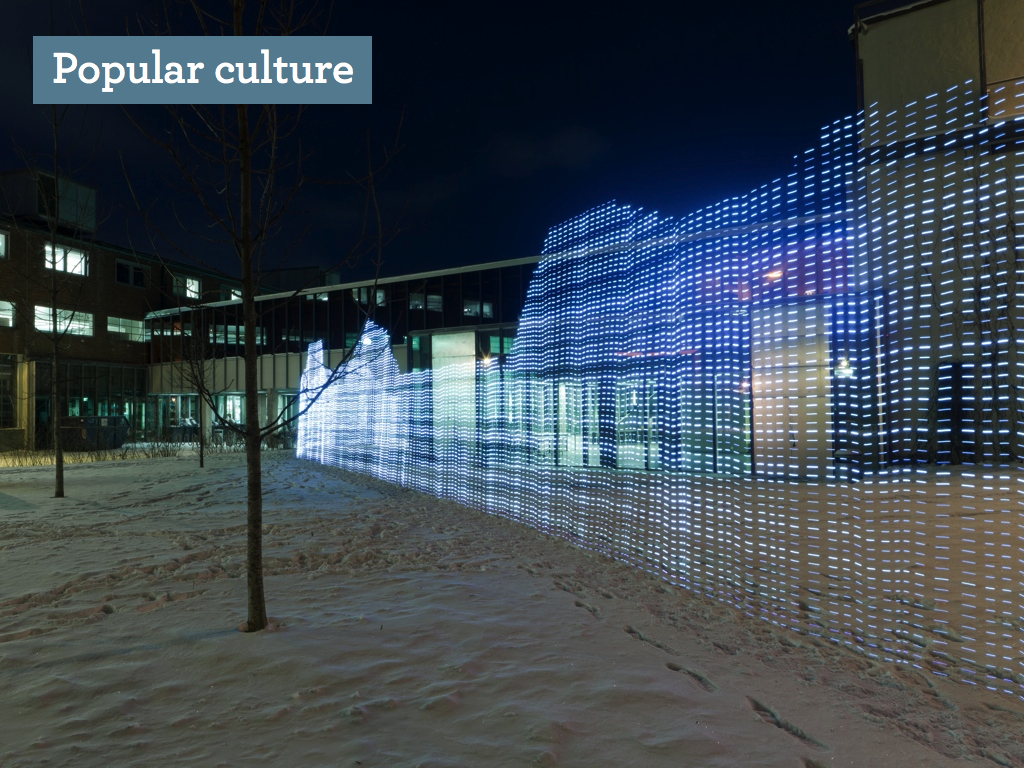
But the film also addresses the everyday cultural understanding of WiFi networks. Only 8 years ago wireless networks where rare and novel.
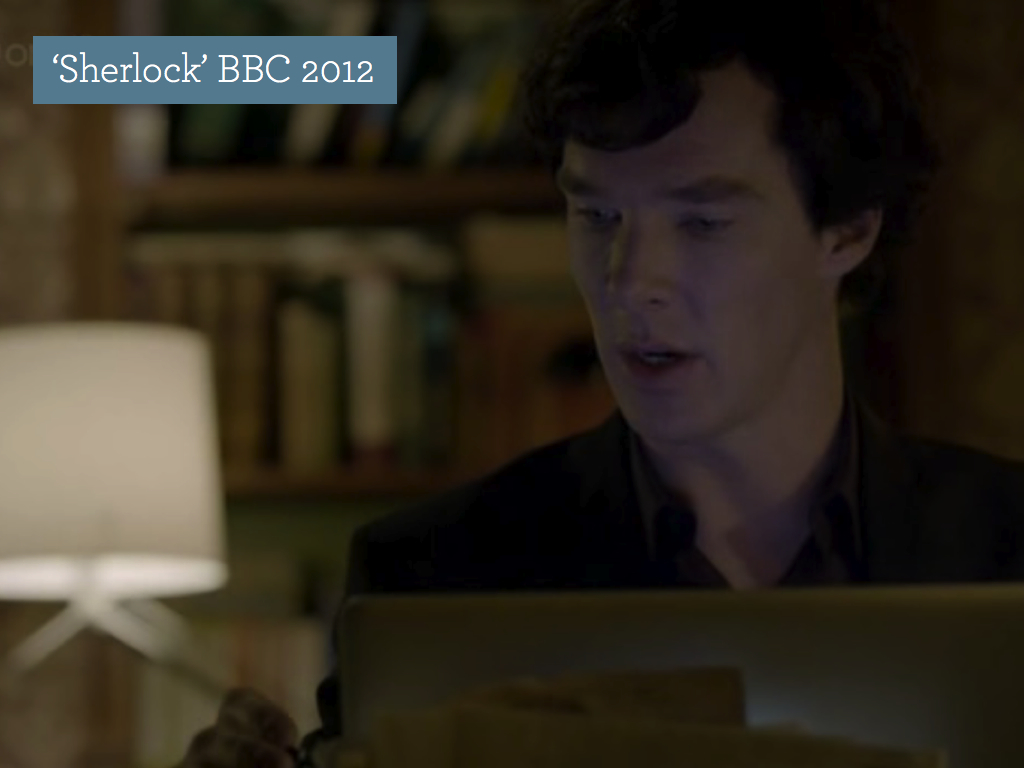
But we do get things like this: A short scene from the latest series of BBC's modernised Sherlock Holmes where he uses his computer to confirm that a group of assassins are closing in on him in Baker Street.
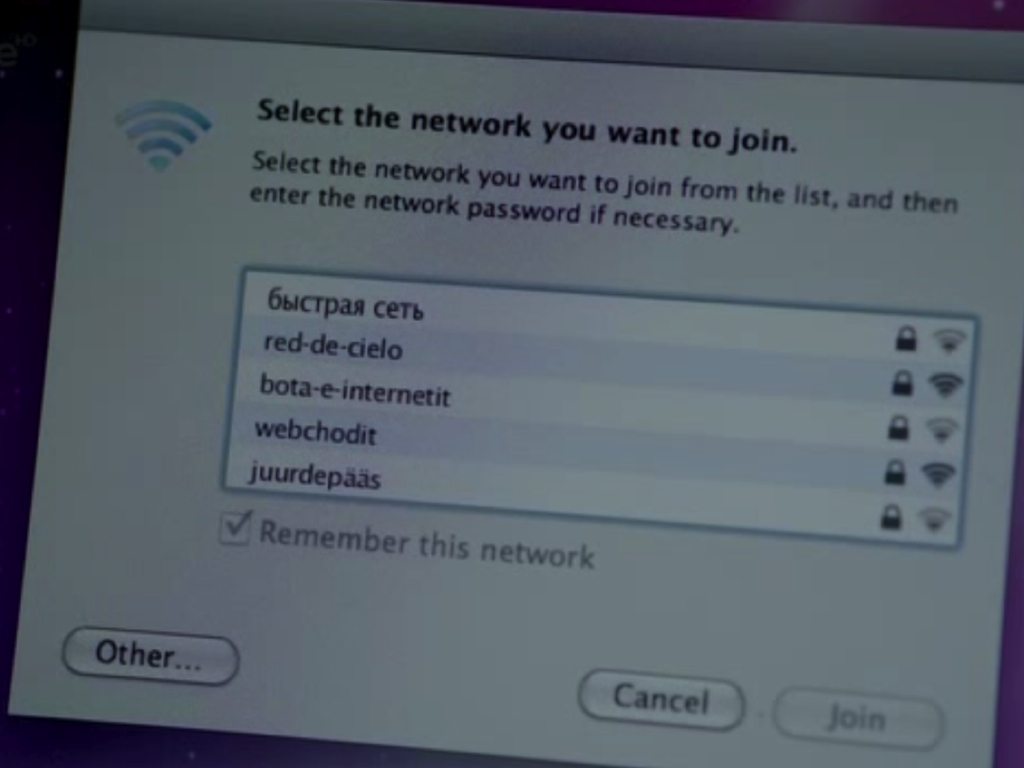
He deducts this from the list of nearby WiFi-networkes in the the five main assassin languages (Russian, Italian, Albanian, Czech and Estonian). This is a wonderful few seconds of television: It is an example of the normalisation of WiFi. WiFi networks have become a shared cultural experience and can therefore be used as a shorthand for modernising Sherlock and placing him within a networked life. The list of network names that pops up on a phone or computer is a shared, common experience, but its significance for networked life is not necessarily understood or discussed.
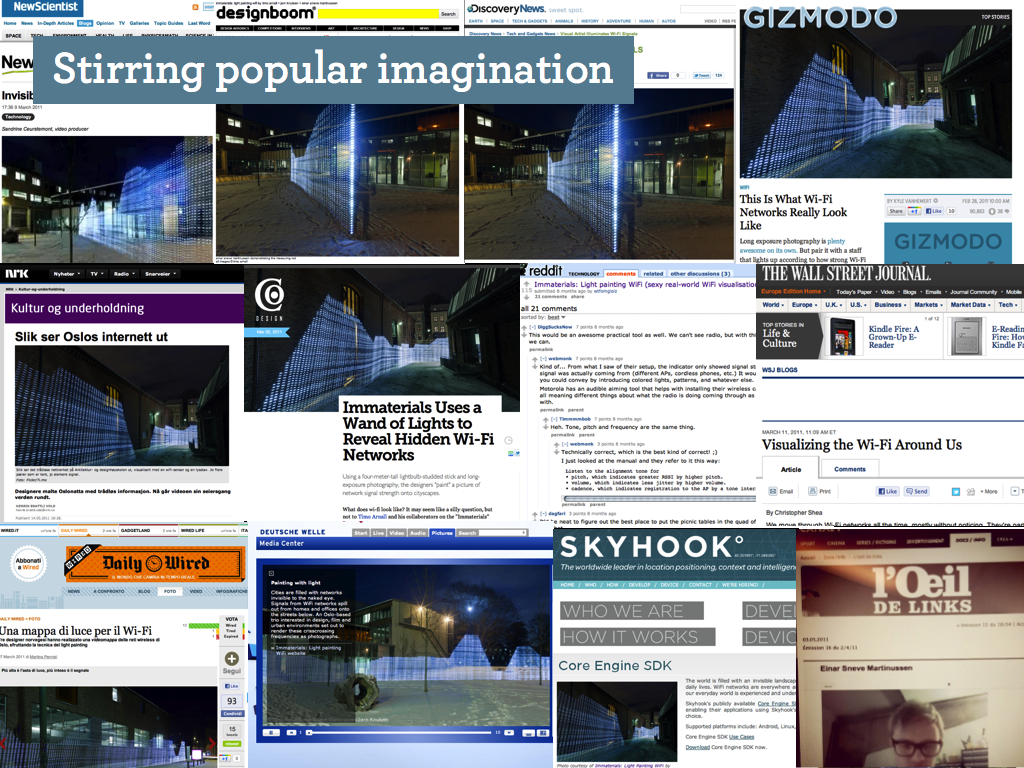
And I think that is probably the reason for why our visualisations have traveled far through popular media and become a minor phenomena of their own. The film has had 1 million views online and led to propagation and discussion across the internet and traditional media. But more importantly: it has inspired other kinds of work.
Some of these have been awkward rip-offs, but some, like this one, are both wonderful and odd. This is a BT ad released a few months after the WiFi film did its first rounds on the internet. It is for a product called the 'BT Smart Wireless Home Hub' and in uses the same visual language as our film, as well as the same argument about a city filled with networks.

I think they have borrowed our design language out of necessity because they are selling a product no one can see. It points to a lack of design language for invisible technology and shared images to discuss around. As such the visualisations can be seen as a form of realisation. It is not necessarily critical, but it shows that there is discursive potential in using design to unpack technological systems.

This next project is also an attempt at a form of discursive design. It is called Ugle. It is an owl that lives both in a kitchen and on the internet.
It sits in the kitchen and allows you to send colour-messages from a phone. And this is all it does. It is a cumbersome, but quite charming way to communicate.
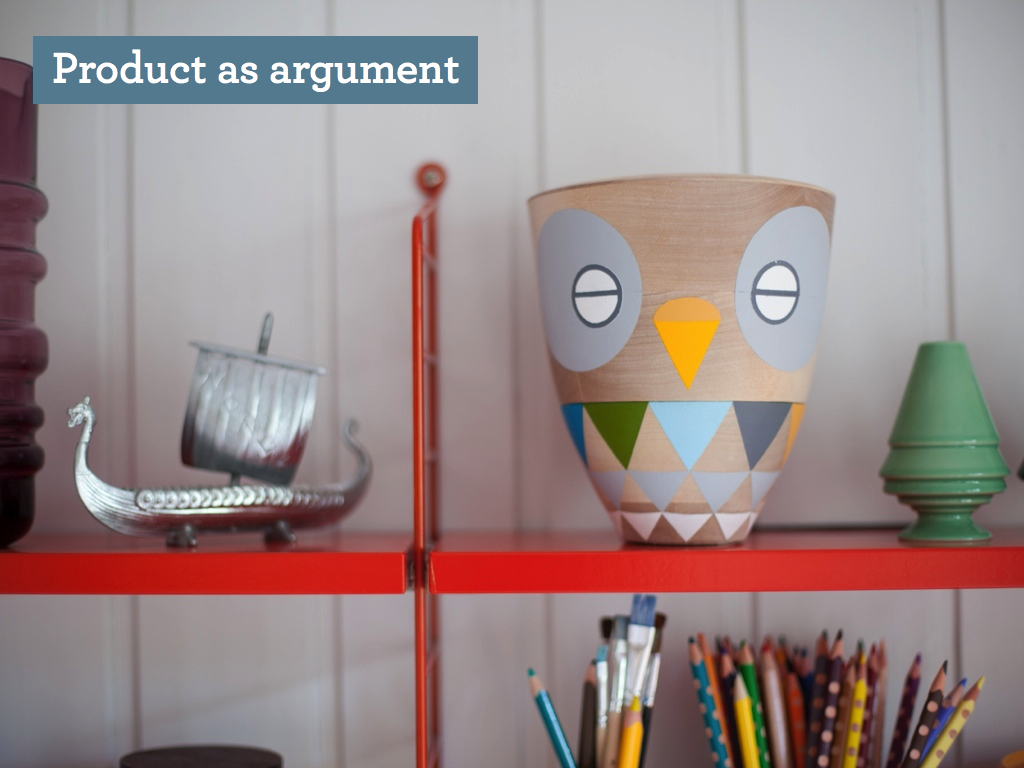
The owl is both an illustrations of what it could mean to have networked products in our kitchens, but it is also an argument. It is an argument against seamlessness and efficiency. It is about re-imaginging networked life through wooden whimsy.
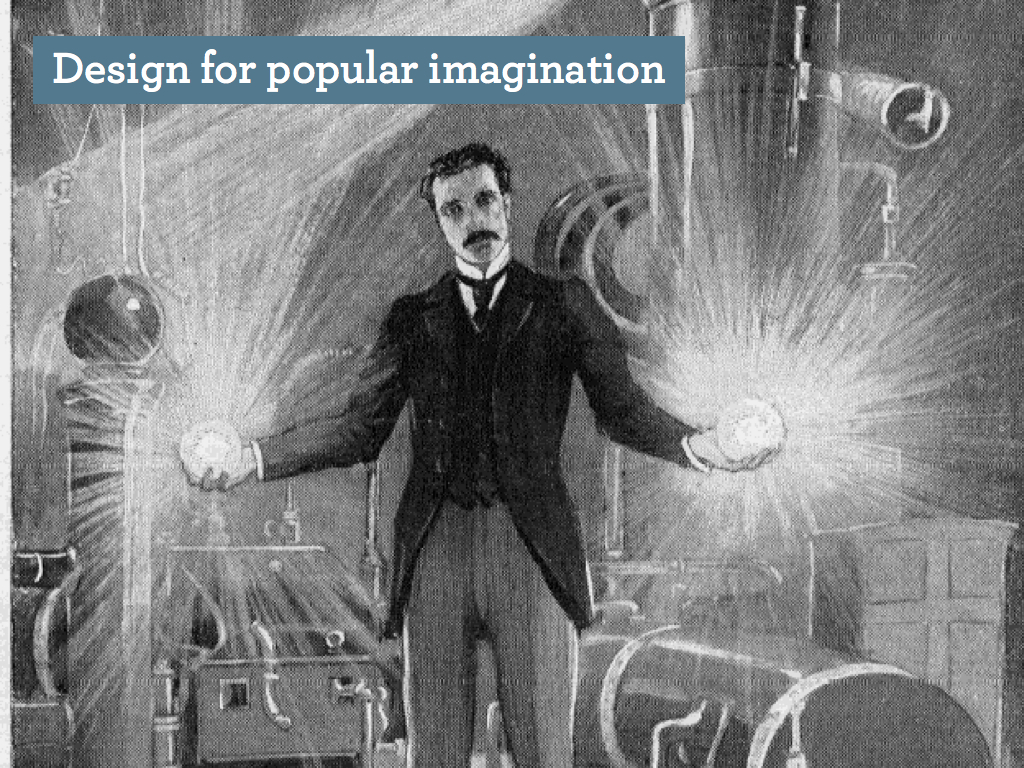
I like to think of the owl as connected to Tesla. Telsa did invent Alternating Current, but he also popularized the excitement of electricity through creating spectacular, and often slightly useless devices for fairs and shows. The owl is also slightly useless, but hopefully also slightly exciting. In a small way I think this points towards a broader potential for using design and playful explorations to shape or stir the popular imagination. Because images and language play form understandings.

The design language used by companies like Apple and Microsoft portray networked life with a glamorous exoticism.This is very similar to how the tourist industry portrays the Arctic as a frozen wonderland of Northern Lights and dog-sledge safaris. I would argue that in doing this the potentials and challenges of everyday life are overlooked. I know that the Arctic is more than Northern lights, and I choose to beleive that the peak of networked life isn't a needy piece of consumer electronics design in California.

I believe that we need is to open up a space for playful exploration and critical discourse grounded in cultural sensibility. More rallies and more politics.
Or just lots of new ways of blowing up the internet.
